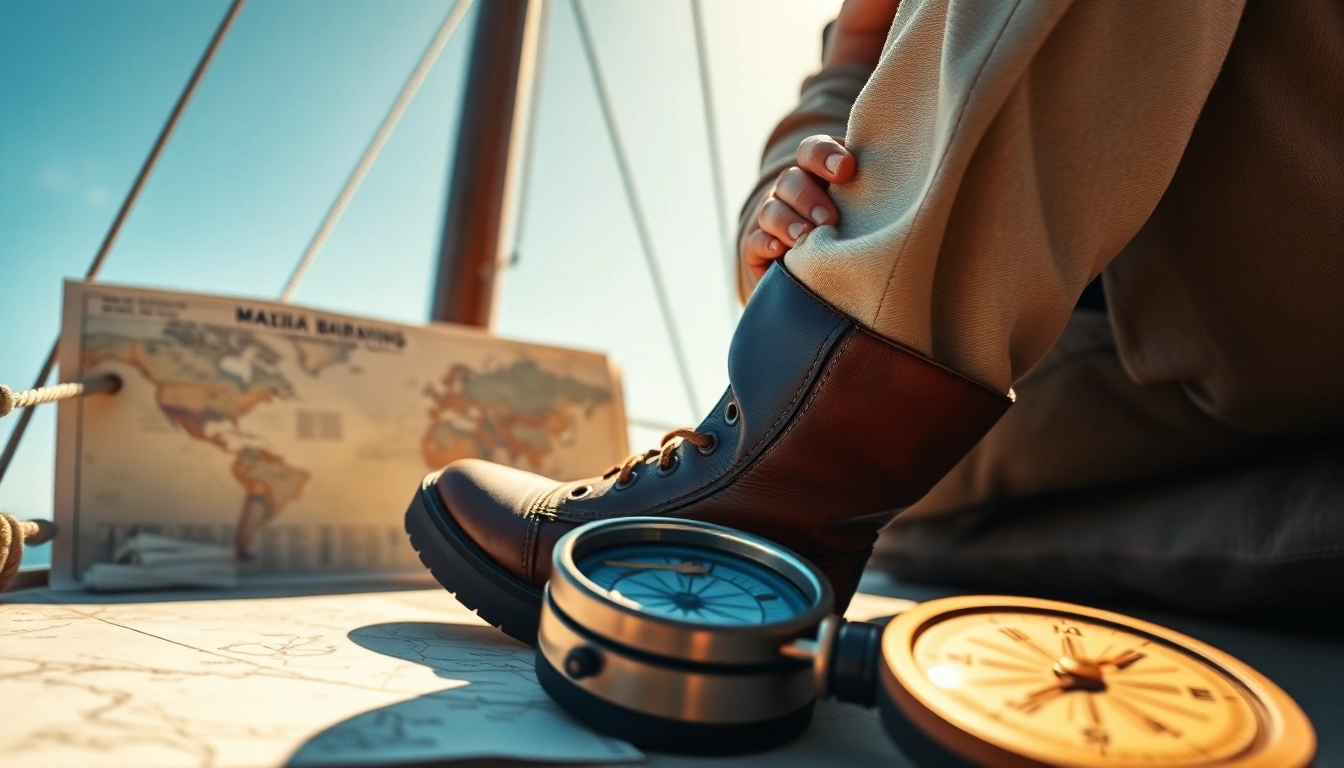Introduction to Marine Lateral Navigation and Its Critical Role in Seamanship
Navigating a vessel accurately is fundamental to safe and efficient maritime travel. Among the various navigation techniques, Boots Versegelung — the method of lateral or ‘seamark’ navigation — plays a vital role, especially when visual cues are limited, such as during fog or night sailing. This approach relies on determining the vessel’s position relative to known landmarks or celestial bodies through precise measurement and calculation. Understanding the nuances of maritime navigation and effectively applying these techniques are essential skills for skippers, whether they operate a leisure boat, a commercial vessel, or a complex yacht.
Fundamentals of Marine Sealing and Its Connection to Navigation
An often-overlooked aspect of navigation is the integrity of your vessel’s surface and equipment. Proper sealing and maintenance—akin to the concept of ‘Versiegelung’—not only preserve the hull’s structural integrity but also influence the durability and accuracy of navigational instruments. Just as a well-sealed boat ensures safety and performance on the water, proper calibration and protection of navigational tools prevent errors that could lead to navigational discrepancies. This analogy highlights how meticulous maintenance and precise navigation are intertwined for marine safety.
Ensuring the correct application of surface seals and protective coatings, like marine sealants, enhances the stability and reliability of electronic navigation equipment thanks to better environmental protection. Effective maintenance reduces the risk of equipment failure, which can be catastrophic during critical navigation phases, especially in challenging conditions.
Essential Navigation Instruments and Their Role in Accurate Positioning
Traditional Tools for Marine Navigation
Historically, navigation relied heavily on tools such as compasses, sextants, and chronometers. The compass provides a basic sense of direction, while the sextant allows for celestial observations to determine latitude and longitude. Portable and fixed GPS units have largely superseded these, but their accuracy depends on the ongoing calibration and protection from environmental damage.
Modern Electronic Devices and Integration of Technologies
Today’s vessels are often equipped with integrated systems including GPS, radar, AIS (Automatic Identification System), and electronic chart displays. These devices facilitate real-time position updates but require proper maintenance and backups. Experienced navigators combine traditional and modern tools, applying techniques like terrestrial navigation (using landmarks and bearings) in conjunction with electronic data to enhance safety and accuracy.
Proper calibration, such as the application of marine sealants to sensitive equipment, ensures accuracy remains consistent over time. Also, maintaining sensors and display units with quality cleaning and protective gear guarantees their longevity and performance.
Common Challenges in Marine Navigation and How to Overcome Them
Environmental Obstacles and Their Impact
Adverse weather conditions such as fog, heavy rain, or storms can obscure landmarks and interfere with electronic signals. This difficulty underscores the importance of having reliable backup systems and sound manual navigation skills.
Instrument Failure or Inaccuracy
Mechanical or electronic malfunctions can cause navigational errors. Regular maintenance, timely replacement of worn parts, and protective measures like sealing ensure that instruments perform at their best. For instance, protective coatings for electronics shield against corrosion in harsh marine environments.
Human Error and Decision-Making
Misinterpretation of data or miscalculations can lead to dangerous situations. Proper training, periodic practice, and careful data interpretation are crucial. Implementing checklists, and cross-verifying data with multiple sources, reduces risks significantly.
Step-by-Step Guide to Precise Marine Navigation
Calculating and Interpreting Transit Lines (Standlinien)
A fundamental aspect of accurate navigation is determining stand lines—imaginary lines on charts indicating the vessel’s position in relation to known objects. This involves measuring angles or bearings from known landmarks or celestial points. Using tools like compasses or bearing scanners, navigators can draw these lines, which intersect at the vessel’s current position.
Implementing Bearing Techniques for Course Safety
Bearings involve measuring the angle between a fixed object on shore or on a navigation buoy relative to the vessel’s heading. Clear understanding of magnetic variation and true north, along with precise instrument calibration, ensures these measurements are accurate. By periodically updating bearings, navigators can track their movement and adjust their course accordingly.
Employing Terrestrial and Electronic Navigation Strategies
Combining terrestrial navigation—such as landmark identification—with electronic positioning enhances redundancy. For instance, when GPS signals are disrupted, visual bearings and compass readings serve as effective backups. Regular maintenance of electronic sensors, including sealing and cleaning, helps prevent drift errors and prolongs the lifespan of critical equipment.
Best Practices for Effective Marine Navigation
Common Errors in Peilung (Bearing) and Their Prevention
Inaccurate bearings often result from miscalibrated instruments, magnetic interference, or human misreading. To avoid these pitfalls, it’s essential to calibrate whole systems regularly, keep electronic and mechanical tools protected from magnetism and corrosion, and cross-verify readings with other instruments or visual cues.
Maintaining and Calibrating Navigational Equipment
Routine checks, including cleaning, sealing, and calibration, are vital. Use high-quality cleaning tools like microfiber towels and soft polishing pads to keep lenses and sensors spotless without scratching. Applying marine-grade sealants and protective coatings shields sensitive equipment from moisture, salt, and temperature fluctuations.
Leveraging Modern Technology and Traditional Methods Harmoniously
Marrying traditional techniques—such as celestial navigation and bearing plotting—with modern GPS and electronic charts provides a comprehensive safety net. This hybrid approach minimizes errors stemming from system failure or environmental interference, thus ensuring a reliable navigation strategy.
